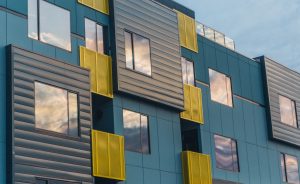Virginia Uniform Statewide Building Code Updates
 Virginia Uniform Statewide Building Code Updates
Virginia Uniform Statewide Building Code Updates
The Department of Housing and Community Development Board has finalized the latest update to the Uniform Statewide Building Code (USBC). This update puts us nearly inline with the 2018 model international energy conservation code (IECC). (The international model code comes out every three years with the 2021 update recently being finalized. More details on that below).
The latest update to the Virginia USBC includes some major energy improvements such as:
- Increased fenestration, which has been included in the model code since 2012
- Blower door testing requirements, which has been included in the model code since 2012
- Increased minimum ceiling insulation from R-38 to R-49, which has been included in the model code since 2012
- ResCheck compliance updated to 2018 IECC, without Virginia amendments. Previously, a work around had been created for VA amendments that weakened the current IECC.
- Energy certificate requirements, which has been included in the model code since 2006
These improvements, in addition to the expanded energy requirements we worked to incorporate into the last USBC update, bring Virginia nearly inline with the 2018 IECC. Along the east coast, only a handful of states have fully adopted the 2018 IECC, and only one southeastern state- Florida- has done so.
The remaining proposals from the 2018 IECC that are not included in the Virginia USBC are:
- Increased wall insulation R-value
- Changing building tightness from 5 ACH to 3 ACH
There is a 30-day comment period open on the Final USBC in the Virginia Register through March 31, 2021. DHCD anticipates an effective date of July 1st, and will begin the 2021 update once the 2018 update takes effect.
General Assembly Bill Update
The General Assembly also passed a bill in 2021 mandating a review of the most-updated IECC. While the original version of this bill mandated an automatic update to the latest IECC within one year, the final bill does not provide a timeline, nor does it expressly state that an automatic update is to occur. Instead, it requires the state to consider amendments that address the changes made in the model code. Since this is quite vague, it’s unclear how this will affect future update processes.
Updates at the International Level
The 2021 IECC was also finalized this fall after a massive appeals process. According to the DOE Office of Energy Efficiency and Renewable Energy, the energy requirements in the final model code will account for a whopping 19% in energy efficiency gains in the residential sector when implemented.
Key changes include:
- Envelope: fenestration and insulation increases
- Lighting: increased efficacy to promote LED use
- HVAC: duct leakage testing required in conditioned spaces, mechanical ventilation systems tested for flow rates, and ventilation fan efficacy increased
- Performance Path/ ERI: provides builders more flexibility to choose options that will work on specific projects based on their particular design, building type and location.
- Optional zero-energy compliance pathway: provides jurisdictions an opportunity to adopt a base or stretch code that achieves zero energy in homes and low-rise multifamily buildings.
More details about these changes can be found in this DOE Office of Energy Efficiency and Renewable Energy presentation.
